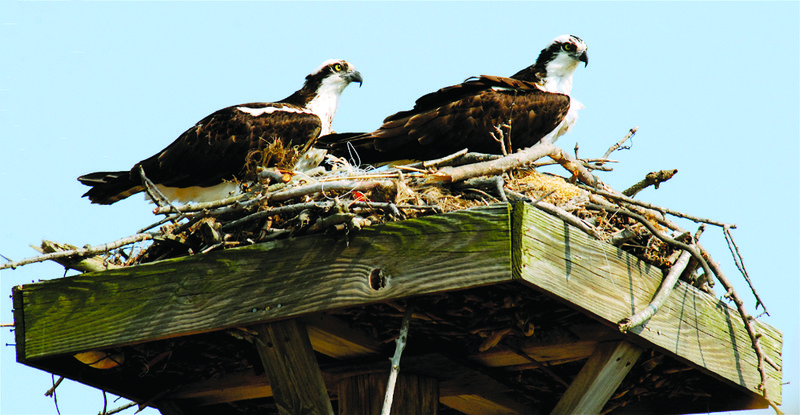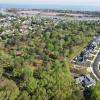The Delaware Division of Fish and Wildlife is seeking volunteers to help monitor the state’s osprey population. These large raptors with their distinctive stick-built nests on tall poles or platforms can be seen along many Delaware waterways, especially Sussex County’s Inland Bays.
Osprey depend on a healthy and abundant food supply, and since their diet consists primarily of fish, monitoring their population and activities statewide provides a good indication of water quality and the general health of Delaware’s waterways.
For those interested in getting to know these unique birds better and adding to knowledge of them, the Division of Fish and Wildlife will hold an orientation for volunteer osprey monitors from 1 to 3 p.m., Sunday, March 10, at the St. Jones Research Reserve, 818 Kitts Hummock Road, Dover, off Route 9 just south of Dover Air Force Base.
Osprey populations throughout the United States suffered serious decline in the 1950s and '60s, largely due to the effects of DDT, PCBs and other chemical contaminants. DDT and most PCB uses were banned in the 1970s, and - despite residual contamination in the environment - osprey populations have recovered markedly. In the early 1990s, to assist their recovery, the Delmarva Ornithological Society partnered with the Division of Fish and Wildlife and other organizations and took the lead in constructing, installing, repairing and replacing osprey nesting platforms throughout the state.
Before 2003, the Division of Fish and Wildlife’s Natural Heritage and Endangered Species Program conducted osprey surveys in the Inland Bays and Nanticoke River areas where osprey populations were traditionally the highest. That year, statewide surveys began as a result of an increase in osprey sightings.
“We know that Delaware’s osprey population has grown immensely, so assistance with monitoring is definitely needed,” said wildlife biologist Anthony Gonzon of the Natural Heritage and Endangered Species Program. “The contributions of our volunteer monitors will work in conjunction with the next statewide survey, which will begin later this year and continue into 2014.”
Osprey will become a common sight beginning around mid-March, with nesting pairs returning and starting to rebuild their nests. Veteran monitors anxiously await the first signs of the ospreys’ return to begin recording data on them at least every other week. Observers note osprey activities from nest building to the juveniles’ first flight, turning in their data when the ospreys depart for migration in late summer.
“Ideally, volunteers should monitor nests near their work or home or be willing to drive to their monitored nest often,” Gonzon said, noting they also need email access to report their findings as well as receive updates about the project and details about other nesting sites throughout the state.
Volunteers who know of an existing nest they would like to monitor should bring location information with them to the osprey monitoring orientation.
For more information, or to attend the orientation, contact Vickie Henderson at 302-735-8657 or Vickie.Henderson@state.de.us.






















































